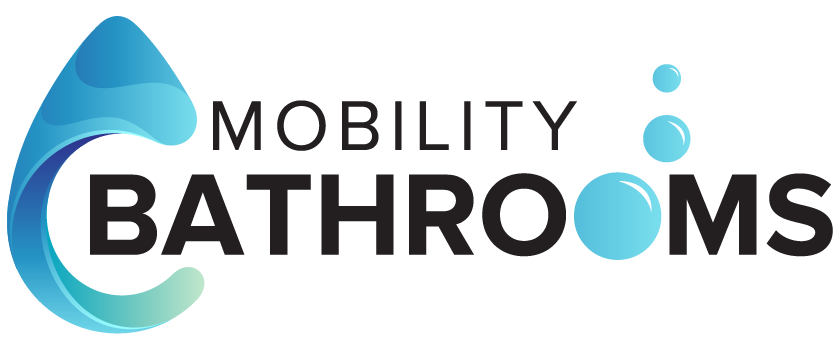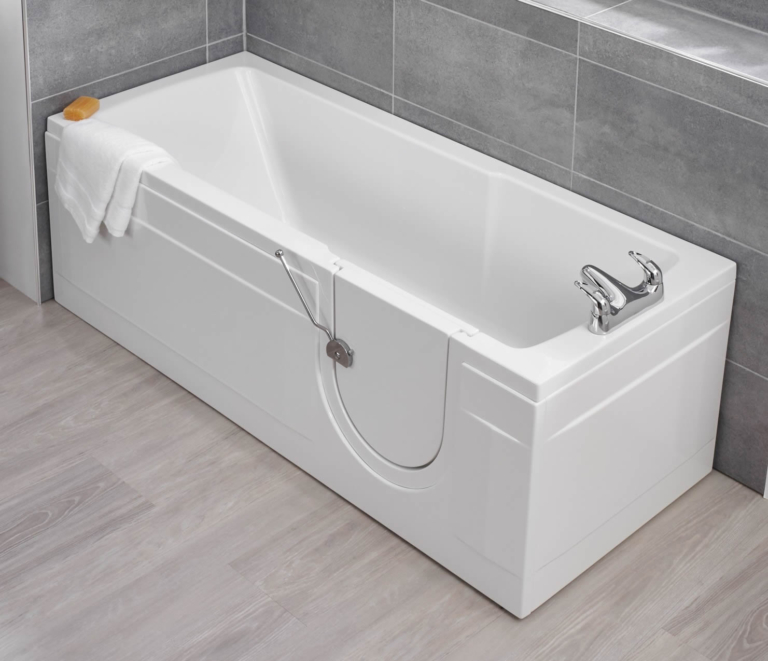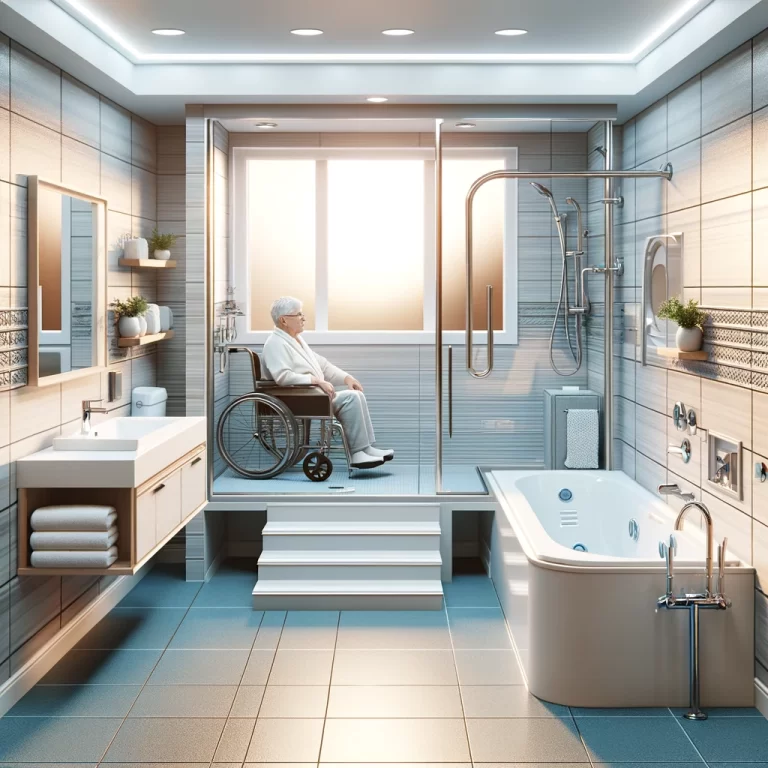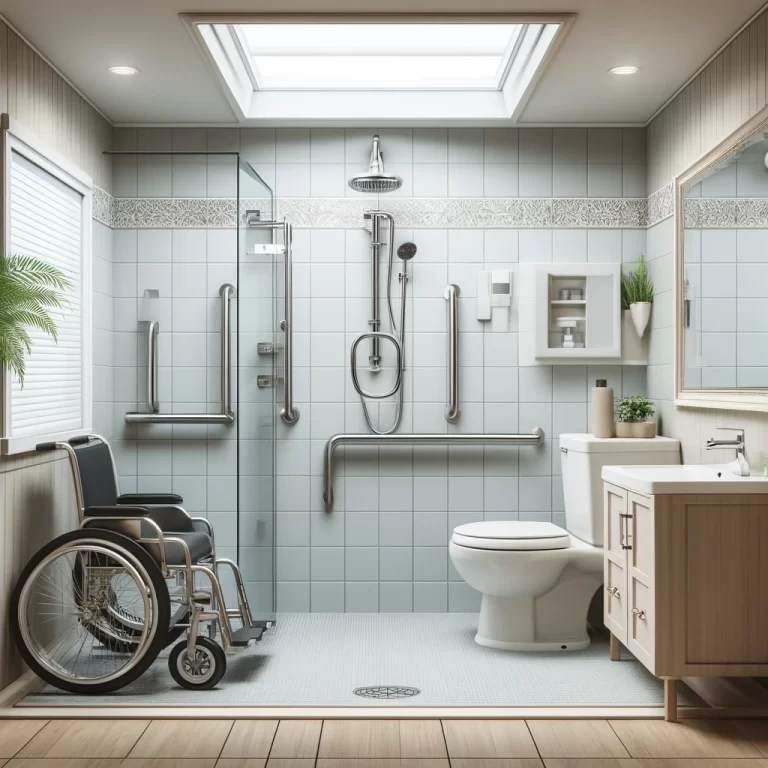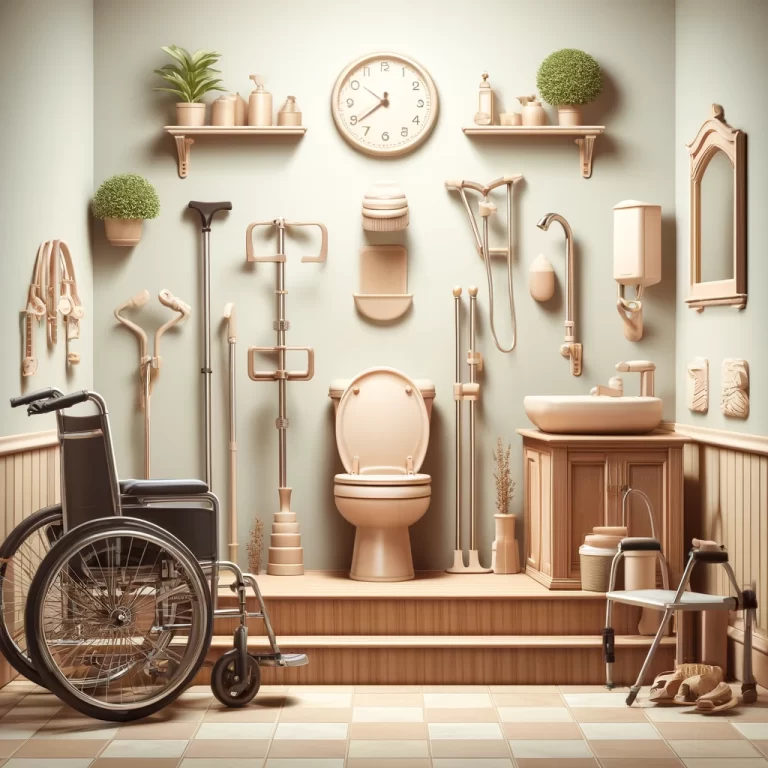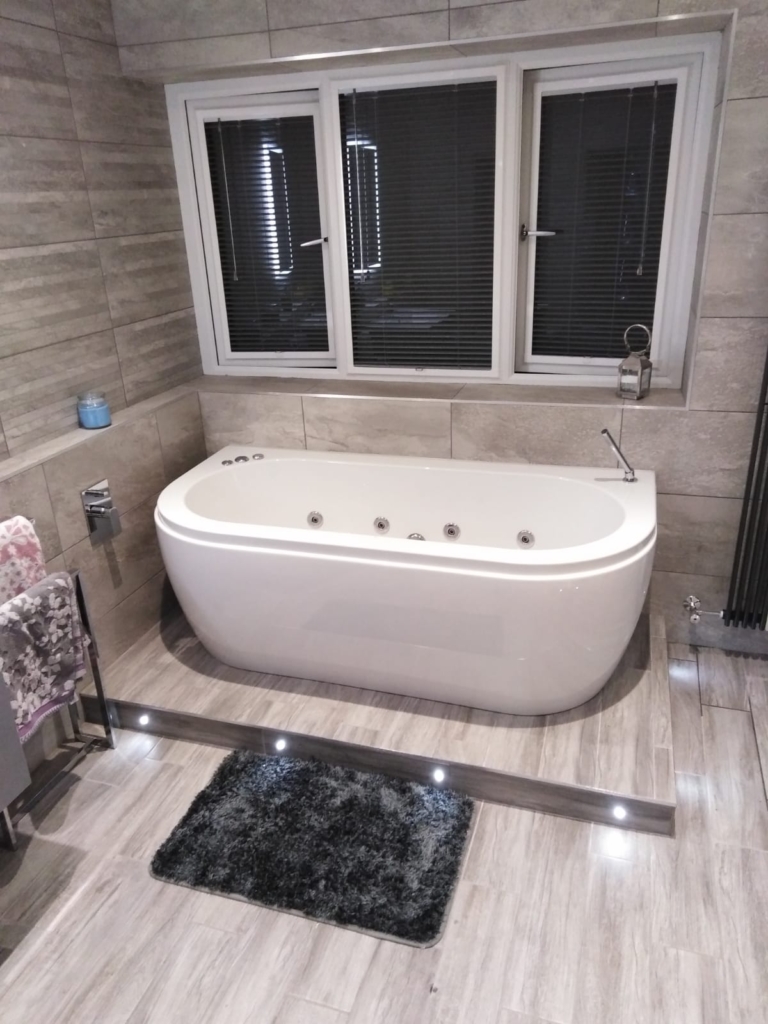How do I make my bathroom accessible for elderly
As we get older, simple tasks such as using the bathroom can become increasingly difficult for the elderly. Limited mobility, balance problems, and sensory impairments can turn the bathroom into a potentially dangerous place.
We explore why bathroom accessibility is essential for the elderly, common obstacles they may encounter, and practical advice on how to make the bathroom safe and accessible.
Discover how to install grab bars, adjust toilet heights, and all the information you need to create a bathroom environment that is friendly for the elderly.
Why is Bathroom Accessibility Important for the Elderly?
Ensuring bathroom accessibility for the elderly and disabled individuals is crucial for maintaining their independence and safety.
Having an accessible bathroom plays a significant role in the daily lives of seniors, offering them the freedom to carry out essential self-care tasks with ease and dignity.
Accessible bathrooms can reduce the risk of accidents and falls, which are major concerns for ageing individuals. Incorporating specialised equipment such as grab bars, shower seats, raised toilets, and non-slip flooring can enhance safety and mobility within the bathroom space. These features are essential in promoting independence, confidence, and overall well-being for the elderly population.

What are the Common Challenges for the Elderly in the Bathroom?
The elderly face various challenges in the bathroom due to mobility issues and the lack of appropriate aids and features.
One of the most common issues faced by older individuals is the difficulty in moving around safely within the confined space of a typical bathroom. This can be exacerbated by reduced strength, balance, and flexibility, making simple tasks like getting in and out of the bath or shower, sitting down on the toilet, or reaching for items on high shelves challenging and potentially hazardous.
Maintaining balance on wet and slippery surfaces can pose a significant risk of falls, which are a leading cause of injuries among the elderly. This is where grab rails can play a crucial role in providing stability and support…
Limited Mobility and Balance
Limited mobility and balance issues are significant challenges for the elderly and disabled individuals, impacting their ability to navigate the bathroom safely.
These challenges can lead to an increased risk of falls and injuries, which can have serious consequences for their overall well-being. Simple tasks like getting in and out of the bath or standing up from the toilet can become daunting and dangerous for those with limited mobility.
Installing grab rails in strategic locations within the bathroom can provide much-needed support and stability. These rails offer individuals something to hold onto while moving around, reducing the likelihood of slips and falls. Replacing traditional baths with walk-in showers can further enhance safety by eliminating the need to step over high bath walls.
Difficulty with Fine Motor Skills
Elderly individuals often struggle with fine motor skills, making tasks like operating taps or handling small objects challenging in the bathroom.
Difficulties with fine motor skills can seriously impact the daily routine of seniors, causing frustration and dependency in their personal hygiene activities. The inability to turn traditional round tap handles or grasp slippery shower handles can lead to accidents, slips, and falls.
By incorporating assistive devices such as lever-style taps and hand-held showerheads, the usability and convenience of these essential bathroom features can be greatly enhanced for elderly individuals. These adaptations not only promote independence but also contribute to the overall safety and well-being of seniors in their daily bathroom tasks.
Sensory Impairments
Sensory impairments, such as vision or hearing loss, can pose significant challenges for the elderly and disabled individuals in the bathroom, affecting their ability to perceive hazards.
These impairments can make simple tasks like navigating the bathroom or distinguishing between hygiene products much more difficult. Without being able to see or hear properly, individuals may struggle to detect slippery surfaces or sharp edges, increasing the risk of falls and injuries. This is where safety features play a crucial role in ensuring a safe bathroom environment. Non-slip flooring can provide traction, reducing the likelihood of slips, while bright, well-placed lighting can help compensate for visual impairments and enhance visibility. Grab bars strategically installed can offer stability and support, promoting independence and confidence for users.
How to Make the Bathroom Safe and Accessible for the Elderly?
Creating a safe and accessible bathroom for the elderly involves installing grab rails, non-slip flooring, and walk-in showers to enhance mobility and reduce the risk of accidents.
Regarding installing grab rails, ensure they are securely mounted to studs for maximum support. Opt for ADA-compliant rails with a textured surface for better grip. For non-slip flooring, consider options like textured tiles or non-slip mats to prevent falls. Incorporating a walk-in shower with a low threshold and a fold-down seat can significantly improve accessibility. Installing handheld shower heads and adjustable height fixtures can make showering easier for individuals with limited mobility.
Install Grab Bars
Installing grab rails in strategic locations within the bathroom is essential for providing stability and support to elderly and disabled individuals.
These rails are designed to assist in preventing slips and falls, especially in wet and slippery conditions commonly found in bathrooms. Placing them near the toilet, shower, and bath can significantly reduce the risk of accidents. Additionally, grab rails come in various styles and finishes to complement any bathroom decor, offering both functionality and aesthetics. To ensure proper installation and maximum safety, it is recommended to hire a professional who can securely mount the rails to withstand daily use and provide long-lasting reliability.
Use Non-Slip Mats and Rugs
Non-slip mats and rugs play a crucial role in preventing slips and falls in the bathroom, especially for elderly and disabled individuals.
These safety features are essential components of accident prevention strategies that can significantly reduce the risk of injuries in wet or slippery conditions.
Choosing the right non-slip flooring solutions is vital to ensure maximum effectiveness, with factors such as material quality, texture, and grip strength being key considerations.
Opt for mats and rugs that are specifically designed for high moisture areas like bathrooms, with features such as suction cups for added stability. Regular maintenance, including cleaning and inspecting for wear and tear, is imperative to uphold their non-slip properties and longevity.
Adjust the Height of Toilets and Sinks
Adapting the height of toilets and sinks to accommodate the needs of the elderly and disabled individuals can significantly improve bathroom accessibility and comfort.
When fixtures are set at the appropriate height, it reduces the strain on joints and muscles, making everyday tasks easier and safer. For toilets, installing raised seats or grab bars can greatly enhance stability and support during transfers. Ensuring that washbasin counters are lowered allows wheelchair users to comfortably reach the tap and washbasin, promoting independence in personal hygiene routines.
These adjustments not only enhance accessibility but also foster feelings of give the power toment and autonomy. By making these modifications, individuals can navigate the bathroom space with confidence and ease, enhancing their overall quality of life.
Consider a Walk-in Bathtub or Shower
Opting for a walk-in bath or shower can simplify bathing routines for elderly and disabled individuals, enhancing safety and accessibility.
A walk-in bathing solution eliminates the need to step over high tub walls, reducing the risk of slips and falls. The spacious design allows for easy manoeuvrability and comfortable bathing experience. Compared to walk-in showers, baths offer the benefit of soaking and relaxation, particularly beneficial for those with muscle or joint pain.
When considering installation, ensure grab rails are properly positioned for support and that the flooring is slip-resistant. Customisable features like hand-held showers and seating options can further enhance the bathing process, promoting independence and a sense of well-being.
Install Handheld Showerheads
Handheld showerheads offer flexibility and convenience for elderly and disabled individuals, allowing for easier bathing and personalised water flow.
These innovative showerheads enable users to easily adjust the height and angle of the water stream, making it effortless to reach all areas of the body during showering.
The ability to detach the showerhead from its holder provides added freedom for individuals with mobility challenges, allowing them to sit comfortably while bathing or to target specific body parts with precision.
The therapeutic benefits of adjustable water pressure can soothe aching muscles and joints, enhancing the overall bathing experience and promoting relaxation.
Make sure the bathroom is well-lit
Proper lighting is essential in the bathroom to ensure visibility and safety for elderly and disabled individuals, reducing the risk of accidents.
Regarding choosing lighting fixtures for the bathroom, opting for bright, yet soft lighting can make a significant difference. LED lights are a popular choice for their energy efficiency and ability to provide clear illumination. Placing lights strategically near the vanity mirror, shower area, and toilet can enhance visibility for tasks like grooming and bathing. Incorporating night lights or motion sensor lights can further aid in preventing falls during nighttime visits to the bathroom, enhancing the overall safety of the space.
What Are Some Additional Tips for Making the Bathroom Elderly-Friendly?
Plus essential safety features, there are several additional tips to make the bathroom more elderly-friendly and comfortable.
When considering the set up of the bathroom for seniors, organisation plays a crucial role in ensuring ease of use. Installing grab bars near the toilet and shower, along with a shower seat, can significantly enhance stability and accessibility.
- Incorporating non-slip mats and rugs reduce the risk of falls.
- Adjustable shower heads and taps can provide comfort and convenience, allowing for easier reach and control.
Personalisation is key in creating a comfortable space; consider adding features like adjustable worktops and handheld shower wands for added flexibility and personalisation.
Keep Essential Items within Reach
Ensuring that essential items are easily accessible within the bathroom can streamline daily routines and reduce the effort required for elderly and disabled individuals.
Creating an organized system for storing bathroom essentials not only enhances convenience but also promotes independence and safety for those with mobility challenges. One effective solution is to install grab bars or shelves at reachable heights to hold items such as toiletries, towels, and medication. Utilising transparent containers or labeling drawers can further aid in quick identification of items, facilitating a seamless bathroom experience. By implementing these storage strategies, individuals can transform their bathrooms into functional spaces that cater to their specific needs, fostering a sense of give the power toment and ease.
Use Contrasting Colours for Better Visibility
Utilising contrasting colours in the bathroom can aid visibility and navigation for elderly and disabled individuals, reducing the risk of accidents.
Colour contrast plays a crucial role in enhancing spatial awareness within the bathroom environment. By incorporating distinct hues for walls, fixtures, and accessories, it becomes easier for individuals with limited vision or mobility to differentiate between different elements in the space.
For example, pairing a light-coloured wall with dark grab bars or a brightly coloured shower curtain can provide clear visual cues for orientation and safety. When selecting colour schemes, opting for high-contrast combinations such as black and white, navy and grey, or yellow and blue can significantly improve visibility and ease of use.
Consider a Raised Toilet Seat
A raised toilet seat can enhance comfort and accessibility for elderly and disabled individuals, making it easier to use the toilet independently.
One of the key advantages of using a raised toilet seat is that it reduces the strain on the knees and hips, providing a more comfortable experience for individuals with mobility challenges.
A raised seat can help promote better posture while seated on the toilet, which is essential for overall comfort and bowel movement efficiency.
When selecting the right height for a raised toilet seat, it is important to consider the individual’s height and specific needs to ensure optimal support and stability.
Install Lever Handles on Taps
Lever-style taps are user-friendly options that can improve accessibility and convenience for elderly and disabled individuals in the bathroom.
These fixtures feature handles that are easy to grip and manoeuvre, making them ideal for those with limited hand strength or mobility challenges. Lever handles also allow for effortless operation with a simple push or pull motion, eliminating the need for twisting or grasping. This design minimises strain on the wrists and joints, promoting a more comfortable experience for users of all ages and abilities.
Conclusion
Ensuring a safe and accessible bathroom environment is essential for the well-being and independence of elderly and disabled individuals.
Installing grab rails in strategic locations, such as near the toilet and shower, can significantly reduce the risk of falls and provide extra support. Additionally, non-slip flooring is crucial to prevent accidents, especially in wet conditions. Investing in a raised toilet seat or a shower bench can make it easier for older adults to use the facilities comfortably and safely. Consider incorporating hand-held showerheads and lever taps for greater control and convenience. These customised aids contribute to a welcoming and functional bathroom space that promotes dignity and autonomy.
Frequently Asked Questions
How do I make my bathroom accessible for elderly?
Making your bathroom accessible for the elderly is important for their safety and comfort. Here are some frequently asked questions about how to make your bathroom more accessible for elderly individuals.
What are some safety features to consider when making a bathroom accessible for elderly?
Some safety features to consider when making a bathroom accessible for elderly individuals are grab bars, non-slip flooring, and a raised toilet seat.
How can I make the shower accessible for elderly?
To make the shower accessible for elderly individuals, you can install a shower bench or chair, a handheld showerhead, and grab bars for support.
Do I need to widen the doors in my bathroom for elderly accessibility?
If the elderly individual uses a wheelchair or walker, it is recommended to widen the bathroom door to at least 36 inches for easier access.
Are there any specific toilet features that are helpful for elderly accessibility?
Yes, a raised toilet seat or a toilet with armrests can make it easier for elderly individuals to use the bathroom independently.
Can I make my bathroom more accessible for elderly without major renovations?
Yes, there are small changes you can make to your bathroom, such as adding grab bars and non-slip mats, that can greatly improve accessibility for elderly individuals without major renovations.
